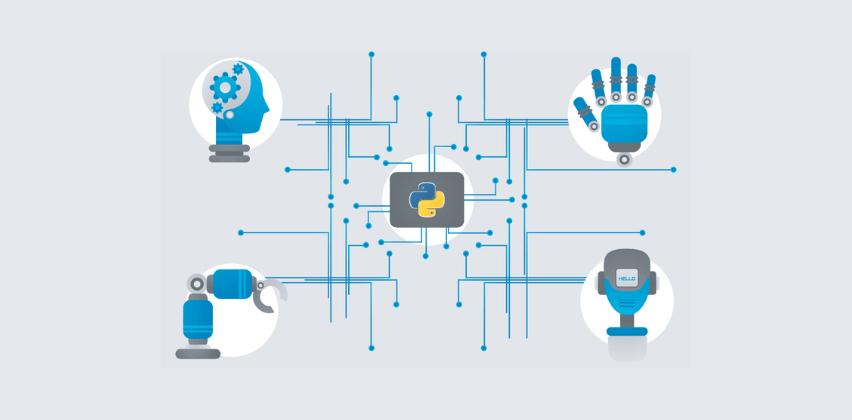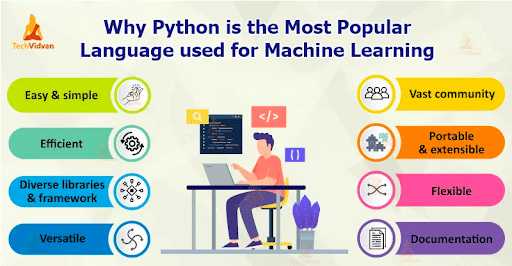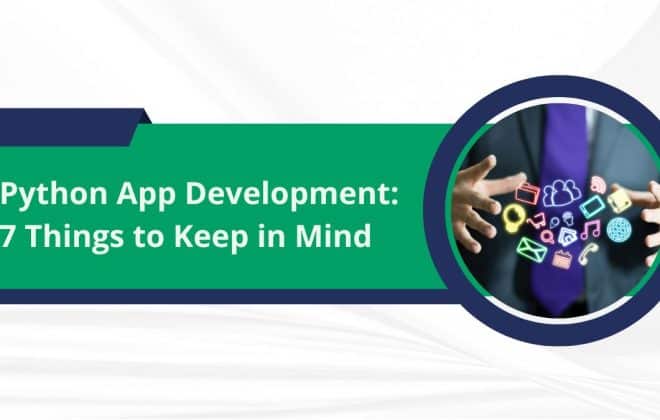
Top 11 Python Frameworks for Machine Learning and Deep Learning
In 2019, Python was the leader in the analytics, Data Science, and Machine Learning software market with a share of 65.8%. The language continues to grow in 2021 as it is a highly useful tool for building Artificial Intelligence apps and working with data. Python application development enables developers to play around with both structured and unstructured data in the most seamless way possible.
But Python isn’t enough – there needs to be a Machine Learning framework where engineers can work with data. The frameworks include the tools, libraries, and interfaces that help in Python app development for ML-based projects and Deep learning solutions.

Both Machine Learning (ML) and Deep learning (SL) utilize a few similar functions except for the fact that Deep Learning is based more on neural networks and connections. The best Python frameworks and libraries offer functionality to build both ML and DL based solutions.
But what are those Machine Learning frameworks and libraries? This article will highlight the top 11 Python Machine Learning libraries and Deep Learning frameworks that developers use for building advanced AI-based solutions.
11 Best Python Frameworks and Libraries for ML and DL
Machine Learning and Deep Learning require advanced frameworks that help with functions like image detection, language processing, pattern detection, and more. Python frameworks for Machine Learning engineers provide these capabilities through unique tools.
Here are the top frameworks and Python libraries for Machine Learning –
- TensorFlow
- The most popular library for Machine Learning, TensorFlow is the best Python application development tool for advanced solutions. It simplifies building Machine Learning models for beginners and professionals. It has built-in modules for visualization, inspection and model serialization.
- TensorFlow is backed by the Google brain team, ensuring regular updates. It is useful for natural language processing, deep neural networks, image and speech recognition, and other functions for Deep Learning.
- Keras
- One of the fastest-growing Deep Learning framework packages, Keras enables using high-level network AP, along with a clean user interface. It enables engineers to combine standalone modules with low restrictions.
- Keras is highly used in building neural layers, solutions with activation and cost functions, batch normalization, and more. It works on top of TensorFlow, which extends its functionality for ML-based projects.
- PyTorch
- The primary aim of PyTorch is to speed up the entire process of Python app development for Machine Learning solutions. It has a C++ frontend along with the Python interface. PyTorch enables quick production deployment, providing companies with rapid solutions.
- PyTorch offers training, building, and deploying small prototypes with ease. It is useful for neural networks, accelerated processing via GPU, and integrates quickly with the rest of Python’s ecosystem.
- Scikit-Learn
- One of the top Python libraries for Machine Learning, Scikit Learn integrates swiftly with NumPy and Pandas. It enables building Machine Learning models for classification, regression, clustering, dimensionality reduction, and other types of algorithms.
- The main purpose of Scikit Learn is to focus only on data modeling. It is the fundamental library that engineers use to build end-to-end Machine Learning applications. There are also some excellent data pre-processing tools in the library.
- Theano
- Built on NumPy, Theano is a dynamic Machine Learning framework with a powerful interface, similar to the NumPy library. It is useful for manipulating and evaluating various mathematical expressions. Using Theano with GPU delivers faster results as it can compute 140 times faster on a GPU than a CPU.
- Theano helps to build efficient Machine Learning algorithms. It offers faster and stable monitoring of the most complicated variables.
- MXNet
- Known as one of the most popular Deep Learning frameworks for neural network development, MXNet is a flexible framework as it supports multiple programming languages, including Python, Java, C++, Scala, Go, R, and more.
- MXNet is one of the best Python frameworks for Deep learning as it is portable and scales to multiple GPU ports. It also offers faster context switching and optimized computation for different functions.
Click here: Why use Python in Healthcare Application
- Pandas
- Another of the highly known Python Machine Learning libraries in Python. Engineers use the library for data manipulation and analysis. It works amazingly well with structured data for Machine Learning algorithms. It offers great features to deploy ML and DL-based applications.
- Pandas assists with data reshaping, dataset joining, data filtration, alignment and easily handles missing data as well. It also provides a 2-D representation of data to make things convenient for python developers.
- NumPy
- An emerging package and one of the most useful frameworks for Machine Learning engineers, NumPy enables developers to process large amounts of multidimensional arrays. It is also useful in Fourier transforms, linear algebra, and other mathematical functions.
- NumPy offers developers the capability to add speedy computations in the solution. Complicated functions can be easily executed – all thanks to NumPy’s power for scientific and numerical computing.
- NLTK
- Also known as the Natural Language ToolKit, NLTK is used by a Python web development company to integrate Natural Language Processing. The tool is useful for Deep Learning solutions that require high amounts of text and speech processing.
- NLTK works well with FrameNet, WordNet, and Word2Vec for proper language processing. It also offers keyword search, optimization of tokens, voice recognition, and much more to ensure solutions that provide language capabilities work well.
- Spark ML
- The Spark ML framework simplifies matrix multiplication for Machine Learning. It divides the matrix into slices and runs the calculation on different servers. It requires a distributed architecture, ensuring that the computer doesn’t run out of memory while performing valuable operations.
- Engineers that use Spark for Big Data and Data Analytics may find it easy to work with Spark ML. It is one of the top Machine Learning frameworks and libraries that eliminate the complexities in preparing and processing large amounts of data.
- Sonnet
- It is a high-level library designed to perform operations using neural network structures in TensorFlow. It assists with the creation of primary Python objects that relate to a specific part of the neural network. It simplifies the design of the neural network, ensuring developers get the best results out of the process.
- Sonnet divides the modules into submodules or can pass to other modules during the internal process. Sonnet Machine Learning models can be easily integrated with TensorFlow code and other high-level libraries.
Checkout: Pros and Cons of Python: A Definitive Python Web Development Guide
Which ML Framework is Best?
Now that we have learned the top 11 frameworks for Machine Learning development, we know that all of them have a few similar functions but can perform different operations. It depends upon the complexity of the ML project before deciding which framework or library is the best suited for an application.
BoTree Technologies is a leading Python software development company, building dynamic ML and DL solutions for companies to lead in the modern world.
Contact us today for a free consultation.




